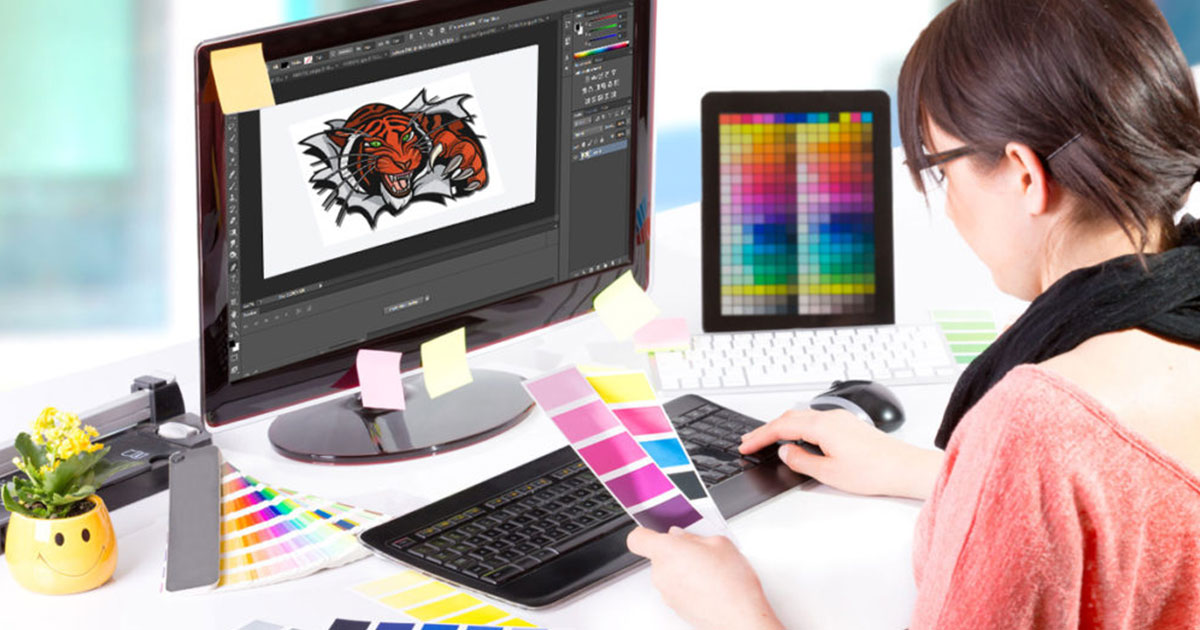Understanding the Needlework Digitizing Refine: Your Ultimate Overview
Embroidery digitizing is a careful craft that calls for precision and knowledge to convert elaborate styles right into electronic styles for machine embroidery. As craftsmens embark on this journey to master the needlework digitizing procedure, an extensive understanding of the basics sets the structure for quality. Past the basic expertise exists a world of sophisticated software application, specialized devices, and nuanced techniques waiting to be explored. By diving right into the nuances of digitizing, one can open a world of imaginative possibilities and raise their needlework jobs to brand-new heights.

Understanding Needlework Digitizing Fundamentals
Embroidery digitizing essentials develop the structure whereupon detailed designs are equated right into machine-readable formats for accurate stitching. This initial action in the embroidery digitizing process is vital for making sure that the last embroidered item is a loyal depiction of the original design. Understanding embroidery digitizing fundamentals includes realizing essential principles such as stitch kinds, sew instructions, thickness, underlay, and pull settlement.
Sew types play an important function in identifying the visual and textural result of the stitched style. By picking the suitable stitch kind, whether it be satin, fill, or running stitch, digitizers can achieve the wanted impact and enhance the total quality of the embroidery. Furthermore, stitch direction influences the circulation and dimension of the style, while thickness figures out the spacing and insurance coverage of the stitches.
In addition, rug sewing gives security to the design by safeguarding the textile and avoiding distortion throughout the needlework procedure. Pull compensation is one more crucial factor to consider to counteract the all-natural propensity of textile to contract when sewn. Grasping these needlework digitizing essentials is essential for developing professional-quality stitched items.
Choosing the Right Digitizing Software
Picking the ideal digitizing software program is a critical choice that considerably influences the effectiveness and top quality of the embroidery digitizing process. Digitizing for Embroidery. When selecting the appropriate digitizing software, it is important to take into consideration aspects such as the complexity of styles you plan to produce, the user-friendliness of the software, the level of client assistance supplied, and the compatibility with your needlework maker
There are various digitizing software program alternatives available in the marketplace, ranging from basic programs for newbies to sophisticated software application for expert digitizers. Some preferred options consist of Wilcom EmbroideryStudio, Hatch Needlework Software, and PulseID. These software supply a variety of devices and attributes to aid you develop detailed layouts effortlessly.
Before making a decision, it is a good idea to discover the various software application choices via cost-free tests or demonstrations to determine which one ideal fits your demands. Furthermore, reviewing reviews and looking for recommendations from skilled digitizers can give beneficial understandings right into the strengths and weaknesses of each software (Digitizing for Embroidery). By thoroughly reviewing your requirements and comparing the functions of various digitizing software, you can make an informed choice that boosts your needlework digitizing workflow
Digitizing Tools and Strategies

Optimizing Style Settings for Embroidery
Mastering the intricacies of style settings is fundamental in accomplishing optimum results in the embroidery digitizing procedure, structure upon the structure laid by recognizing digitizing devices and methods. When optimizing layout setups for embroidery, it is necessary to take into consideration factors such as stitch kind, density, rug, draw settlement, and enrollment. Sew kind choice influences the total appearance and feel of the style, with choices like satin, fill, and running stitches supplying different appearances and impacts. Thickness describes the spacing and density of stitches, influencing the style's protection and longevity. Appropriate underlay stitching supplies stability and protects against material distortion, specifically for complex styles or on elastic products. Pull compensation adjusts for textile stretch during sewing, making sure accurate design duplication. Registration settings straighten various components of the style precisely, preserving overall style honesty. By fine-tuning these layout settings, embroiderers can enhance the quality and accuracy of their embroidered developments.

Troubleshooting Common Digitizing Issues
When experiencing usual digitizing issues during the needlework procedure, it is important to recognize the source and carry out effective options promptly. One typical problem is stitch thickness concerns, where stitches might be as well thick, creating the fabric to tighten, or as well sparse, causing gaps browse around this site in the style. Readjusting the stitch density setups in the digitizing software can help solve this concern.
An additional regular obstacle is thread breaks throughout the embroidery process. This can occur because of numerous reasons such as inaccurate stress setups, boring needles, or using low-quality string. Guaranteeing correct maintenance of the needlework machine, including routine needle changes and stress changes, can reduce the occurrence of string breaks.
Additionally, design enrollment errors can cause misaligned elements within the needlework design. Checking the style positioning in the digitizing software and making essential adjustments before sewing can aid in preventing this problem. By dealing with these typical digitizing concerns promptly and effectively, you can ensure a smoother needlework process and top quality ended up items.
Verdict
To conclude, grasping the needlework digitizing procedure needs a strong understanding of the fundamentals, the ideal choice of software, and knowledge of devices and methods. Optimizing layout settings and repairing common digitizing concerns are vital actions in guaranteeing high-quality embroidery outcomes. By following these steps faithfully, one can achieve precision and effectiveness in the digitizing procedure.